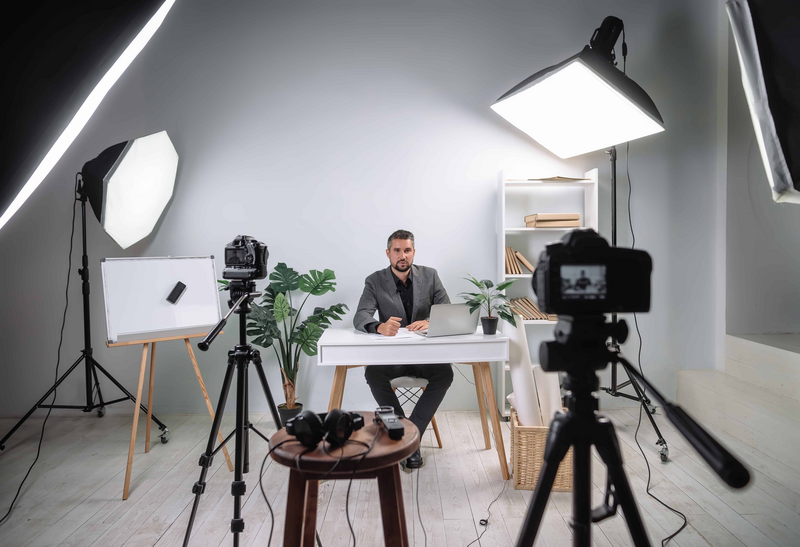ATD Blog
New Role for Trainers: TV Producer
Wed Aug 12 2020

“Lights, camera, action!” Sabrina smiled as one of her colleagues walked into the frame, sat down, and picked up the phone. This wasn’t Hollywood or some fancy TV studio. It was a training department on the east coast. And Sabrina, who never dreamed she could make a show, was filming content for a training video on ergonomics and posture for use in a webinar. As much as she loved being in the classroom, video production was even more exciting.
Video production isn’t the kind of work many people imagine for trainers. Don’t trainers wear headsets and lead webinars, monitoring chat windows and muting folks’ microphones? Or lead team-building exercises? Or demonstrate operational procedures to staff? Not anymore. Tomorrow’s trainers are as much media producers as facilitators. And because of the COVID-19 pandemic, tomorrow is today.
This isn’t news. In fact, I forecasted this in my book Rapid Media Development for Training in 2016 and have continued to suggest it at conferences around the globe. Being a media creator and content curator will be a key skillset for most trainers. But being a media creator is more than just making videos. It’s about making videos that leads to learning, looks polished, and is created efficiently. The ability to do this puts a lot of demands on trainers because most studied adult learning, not film studies.
Video Pushes Learning Further Into Organizations
Video offers powerful opportunities to reach more staff with learning content wherever they are, whenever they need it, and on whatever device they choose. And it supports adult learning principles such as learner autonomy—learners can choose to learn when they need to and at their pace—distribution—learners don’t have to drive or fly to get learning; learning comes to them—and access—forget expensive field trips to see factories in action. Video brings the real world into the learning space.
Since I wrote Rapid Video Development for Trainers in 2012, technology has marched on. While the principles of effective instructional videos are the same, the tech is much easier. We don’t need to worry about technical stuff like white balance and audio levels because the latest Apple and Android phones make these things a doddle. Now everyone carries a TV camera in their purse, their briefcase, or their back pocket.
Producing Good Video Requires a Robust Skillset
But just because someone has a camera in their back pocket doesn’t mean they can make engaging videos. It’s like saying that if someone has Microsoft Word on their computer, they can write an award-winning book. It just doesn’t work that way. To be good at creating videos and regularly producing consistently quality content, you need the right skills and a robust workflow to follow.
These skills fall into three categories that are addressed in an ATD article from a few years ago. These categories are “edutorial,” editorial, and production skills.
Edutorial skills relate to the learning aspect of video and include core instructional design processes such as analyzing needs, writing objectives, and aligning content to business goals.
Editorial skills are associated with the traditional TV producer, such as knowing how to keep eyeballs on the screen, editing content to flow smoothly, and keeping content quick and easy to understand.
Production skills are about using equipment and managing the production workflow.
Folks new to video often think that production skills are the most difficult to learn. But they’re not. Yes, learning them like anything else will take an investment of time. But once you’ve nailed down skills like lighting, filming, framing shots, getting audio right, and editing, these tasks become as automatic as driving a car. It’s edutorial and editorial skills that take longer to learn and require endless elements of creativity.
For more detailed advice, join me in September for the next session of the Rapid Video Development for Learning Certificate program.
You've Reached ATD Member-only Content
Become an ATD member to continue
Already a member?Sign In
